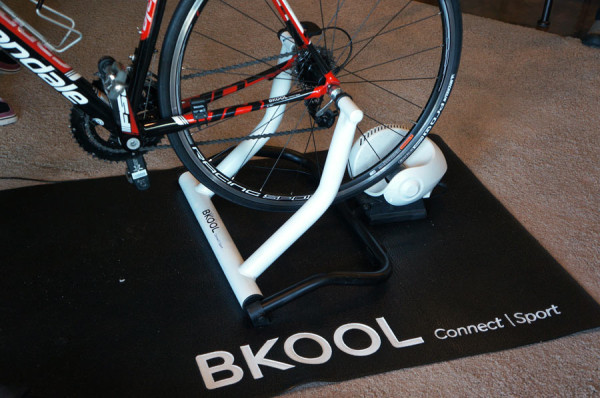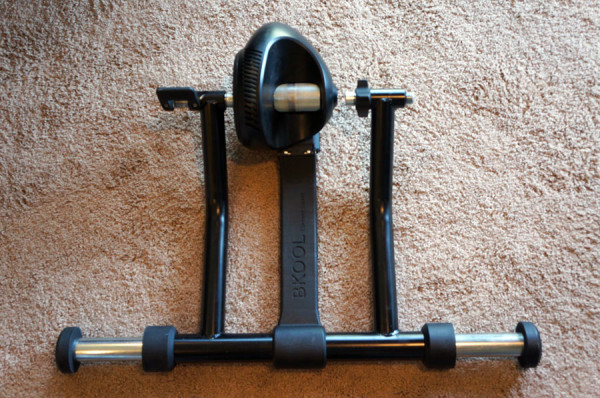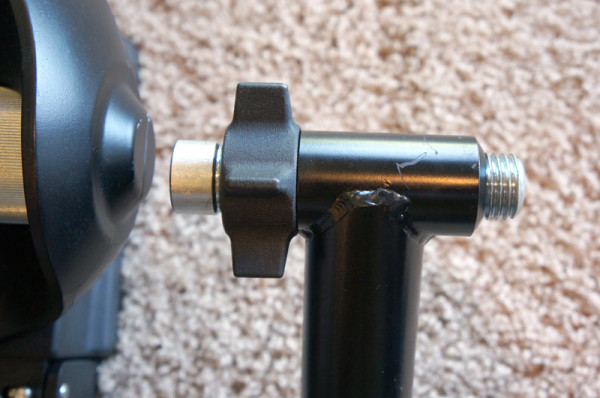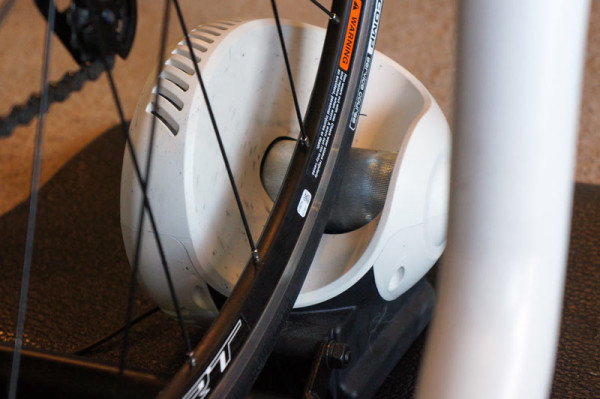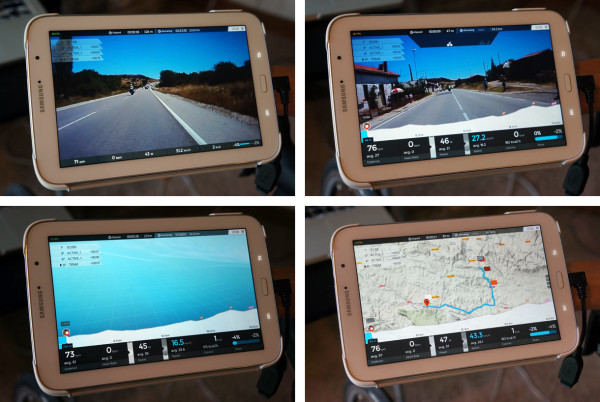BKool is a Spanish brand that started as a technology company that wanted to make a simulator but needed a trainer for it to work on. So, they made their own trainer, which, along with the software, is made in Spain and takes a different approach to indoor training.
The basics are: It’s a magnetic trainer with computer controlled resistance, the levels of which come from their online simulation program. The program lets you watch ride videos from around the world or use professional training programs, then join up with others or issue challenges via its social integration.
Video routes stream at the speed you’re riding and resistance adjusts based on the elevation profile. You set up your height and weight, and then resistance levels are applied accordingly. So, a heavier rider would feel more resistance on the climbs, just like in the real world.
We’ve had one of the originals (shown above) in for review since last winter and, honestly, our opinion has been lukewarm. There are certainly some cool features, but several physical and virtual issues have kept it from living up to the hype. Fortunately, the new model and updated software could turn our frown upside down. Check it out…
The trainer itself gets several physical improvements to make it more stable and pleasant to use. The frame gets bigger tubes so it’s stiffer, and the bottom section has legs that extend to give it a wider footprint.
The axle clamps are more secure, and the legs are damped so they’ll lower slowly rather than crash down as soon as you pull the wheel out. The electronics are also updated to make it run more quietly.
The roller itself stays the same, which is a medium-diameter, knurled metal surface. If the new version proves more stable, particularly when standing, it’ll address most of our concerns. We’ll have one in around September (which is when the new units start hitting US shores) for review.
The physical trainer is really only part of the Bkool system, though. You need the online/software component to make it worth using. Unplugged, it’ll provide light, fixed resistance. So, technically, you could take it to the races for warmups. The compact folded size certainly entices you to do so. But to get any quality training out of it, it needs to be synced to their online service. Fortunately, that now has improved features, works with more devices and adds more (and better quality) options with the free version.
Beyond the hardware improvements, there are software updates that add a new Inertia Simulation (IS) that helps carry momentum like it would in the real world. For example, when you coast down a hill leading into a climb, the IS program makes it feel like you’re coasting up the first bit of the climb, lessening the applied momentum as you go up just like it would feel in the real world. A firmware update will bring that Inertia Simulation to the original model soon, too.
Their free account adds 2D and map views of more than half a million routes (bottom two views, above) as well as collects and analyzes your own data. You can also watch your own recorded routes on video. With a paid premium membership, you view video of the routes and can use the training plans (top two views). It’ll toggle the video with or without the elevation profile and ancillary data. They say most of the routes are about an hour, but you can filter by length to easily select one that fits your schedule.
You can switch between free and paid premium plans, letting you upgrade in the winter or when you’re more apt to use it, then downgrade in the summer, all without losing any of your training data.
A video editor is a new free download that lets you make your own videos and watch them with a free subscription. If you record with a GPS camera or a combination of regular camera and GPS cycling computer or phone (using their app), it’ll figure out incline and decline grades automatically and create the resistance profiles. If the GPS capture isn’t exact, you can clean up the route using Google Earth, and you can also manually adjust the slope rate.
All videos uploaded need to go through an approval process to ensure the content is appropriate (people have tried some weird stuff, apparently, like surgery procedures!), which should take 48 hours or less.
If you can get a GPX file from someone else’s ride (except MapMyRide, for now), you can upload that, too, and watch it in Map View. With more and more race promoters putting GPX files for their events online, it’s a great way to “preride” a course without ever being there. These new options should let you preride a course then train with that data and learn the course visually and physically. It also adds a lot more usefulness and value to the free plan.
Another way to use it is to create your own training plans and upload them, or just use one of the training plans available through .
The new trainer is $650, same as before, and includes a wheel block, USB ANT+ dongle and rear skewer. It also includes a three month subscription to premium for $1, after which it’s $15 per month.
The simulator is now also compatible with Mac, and they’ve added apps for Android and iOS devices that let you capture outdoor IRL ride data to upload to create routes. If you can get an ANT+ dongle attached to your Android or iOS tablet, it’ll let you control the trainer without a PC. It all comes out in September and looks to be a pretty significant improvement over the original. They’re even working on a group program that’ll capture multiple riders at a time for, say, spin classes, but each trainer would still need it’s own computer to connect to.
